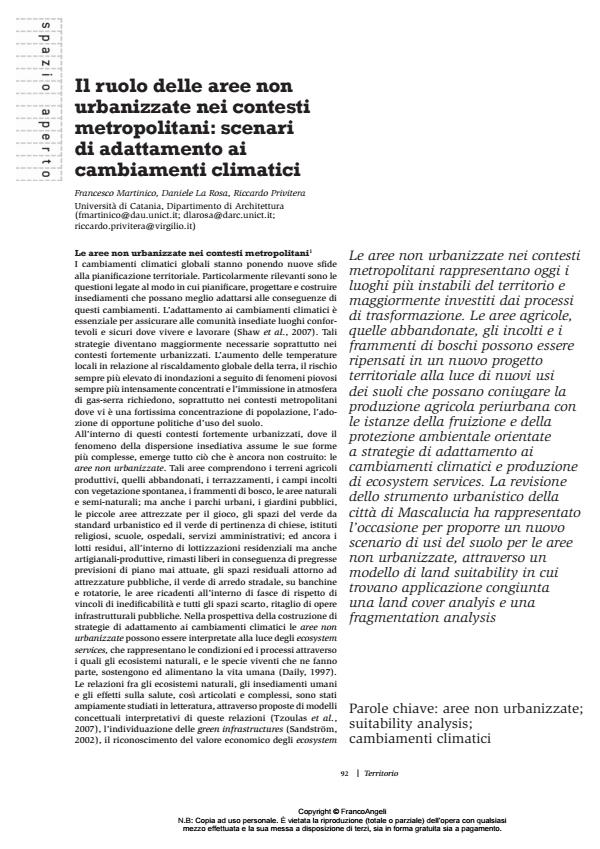Il ruolo delle aree non urbanizzate nei contesti metropolitani: scenari di adattamento ai cambiamenti climatici
Titolo Rivista TERRITORIO
Autori/Curatori Francesco Martinico, Daniele La Rosa, Riccardo Privitera
Anno di pubblicazione 2013 Fascicolo 2013/66
Lingua Italiano Numero pagine 8 P. 92-99 Dimensione file 510 KB
DOI 10.3280/TR2013-066018
Il DOI è il codice a barre della proprietà intellettuale: per saperne di più
clicca qui
Qui sotto puoi vedere in anteprima la prima pagina di questo articolo.
Se questo articolo ti interessa, lo puoi acquistare (e scaricare in formato pdf) seguendo le facili indicazioni per acquistare il download credit. Acquista Download Credits per scaricare questo Articolo in formato PDF

FrancoAngeli è membro della Publishers International Linking Association, Inc (PILA)associazione indipendente e non profit per facilitare (attraverso i servizi tecnologici implementati da CrossRef.org) l’accesso degli studiosi ai contenuti digitali nelle pubblicazioni professionali e scientifiche
Today non-urbanised areas in metropolitan contexts are the most unstable places in the community and the most affected by transformation processes. Agricultural areas, those abandoned and uncultivated and fragments of woods can be reconsidered in new urban planning in the light of new uses for land which can combine peripheral urban agricultural production with examples of use and protection of the environment oriented towards strategies for adaptation to climatic change and the production of ecosystem services. A review of urban planning instruments in the city of Mascalucia presented an opportunity to propose a new scenario for land-use in non-urbanised areas by means of a land suitability model in which combined land cover analysis and fragmentation analysis were applied.
Parole chiave:Non-urbanised areas; suitability analysis; climatic changes
Francesco Martinico, Daniele La Rosa, Riccardo Privitera, Il ruolo delle aree non urbanizzate nei contesti metropolitani: scenari di adattamento ai cambiamenti climatici in "TERRITORIO" 66/2013, pp 92-99, DOI: 10.3280/TR2013-066018